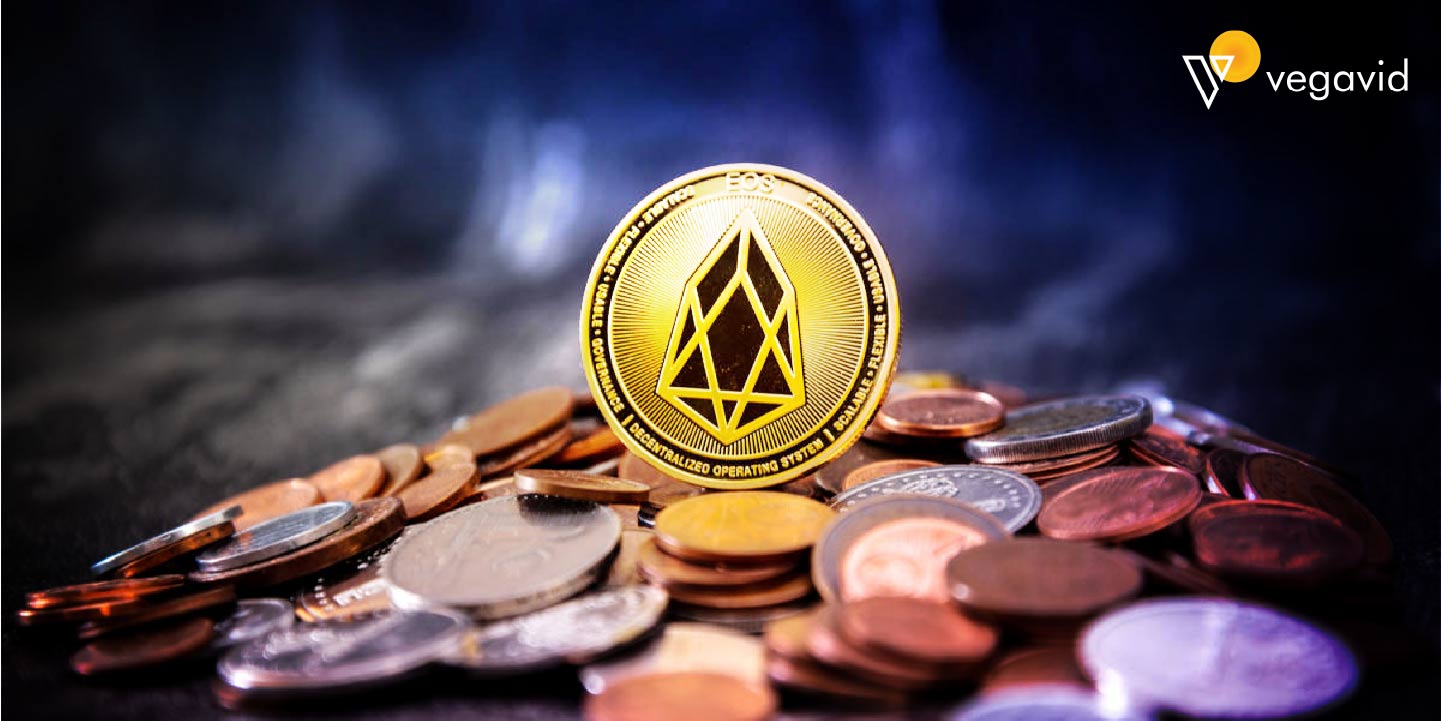
Blockchain technology has truly revolutionized how we think about applications and value exchange. Of all the platforms out there, I’ve become fascinated with EOS and its potential to enable whole new categories of decentralized services and experiences. EOS, a blockchain platform, is designed to facilitate high-performance decentralized applications (DApps). It stands out for its scalability, fast transaction speeds, and low transaction fees, making it a popular choice for developers. EOS employs a delegated proof-of-stake (DPoS) consensus mechanism, with 21 elected block producers responsible for validating transactions and maintaining the network’s security. This approach enhances efficiency and consensus, allowing for quick confirmation of transactions.
EOS aims to provide a user-friendly environment for developers with tools, resources, and innovative contract capabilities. Its focus on usability and scalability makes it well-suited for applications that demand high throughput and responsiveness. As a prominent player in the blockchain ecosystem, EOS has contributed to developing decentralized applications, gaming platforms, and various projects across industries. Let’s explore some of the promising opportunities this network presents!
An Infrastructure For Innovation
Right from its launch, EOS aimed to solve issues plaguing early blockchains, like scalability and usability, that hindered mainstream adoption. By optimizing for speed, throughput, and low transaction costs, it established an infrastructure primed to support ambitious DApps in sectors like gaming, social media, and digital collectibles. The EOS blockchain empowers builders to dream big, knowing the underlying framework can seamlessly scale with demand. An infrastructure for innovation is the foundation upon which progress, creativity, and transformative change thrive. It encompasses the physical, technological, and institutional elements that nurture and support innovation in various domains.
- Technological Infrastructure: Cutting-edge technologies and tools are fundamental for fostering innovation. Access to high-speed internet, cloud computing, advanced software, and data analytics resources is essential for innovators to develop and test new ideas.
- Educational and Research Institutions: Universities and research centers are crucial in creating an innovation-friendly environment. They provide knowledge, expertise, and a space for experimentation, facilitating breakthrough discoveries and innovations.
- Entrepreneurial Ecosystem: Supportive startup communities, venture capital, and mentorship networks encourage aspiring entrepreneurs to take risks and bring their ideas to fruition.
- Regulatory Framework: A balanced regulatory environment that protects intellectual property, ensures fair competition, and facilitates collaboration is vital for innovation.
- Collaboration and Networking: Building connections and partnerships, locally or globally, creates a fertile ground for the cross-pollination of ideas and knowledge exchange, fueling innovation.
- Cultural Acceptance of Risk: A culture that tolerates failure as a part of the innovation process encourages individuals to take risks and explore unconventional solutions.
An infrastructure for innovation is dynamic and ever-evolving, adapting to the needs of a changing world. It cultivates an environment where creative thinking and progress are not just possible but actively encouraged, resulting in advancements that drive society forward in diverse fields, from technology and science to arts and entrepreneurship.
No Fees Unlock New Economies
A core design tenet of having zero transaction fees comes with huge implications. By removing monetary friction, micropayments and innovative incentive models become viable. I’m excited to see what novel sharing, lending, and subscription applications might emerge when fractional value exchanges aren’t cost-prohibitive. Creators gain more flexibility to customize rewarding user behaviors and engagement in their communities, too. The concept of “no fees” has the potential to unlock new economies by eliminating financial barriers that traditionally impede transactions and economic participation. In conventional financial systems, fees can act as a deterrent, particularly for individuals in underserved or low-income communities. However, the advent of blockchain technology, cryptocurrencies, and decentralized finance (DeFi) platforms has brought forth the idea of feeless transactions, offering several benefits.
First, feeless transactions remove economic discrimination, enabling individuals with limited resources to engage in financial activities, transfer money, and access a broader range of services. It promotes financial inclusion and reduces disparities in economic participation. Moreover, feeless transactions can revolutionize micropayments, allowing for the transfer of tiny amounts of value. It has applications in content monetization, pay-per-use services, and supporting creators, opening up new opportunities for earning and incentivizing digital content and services. However, it’s essential to consider the sustainability and security of feeless systems, as they may face challenges related to network congestion and spam. Nevertheless, the potential to unlock new economies by removing financial barriers is a promising prospect that aligns with the principles of inclusivity and democratization that blockchain and DeFi technologies aspire to achieve.
Being Your Bank
The ability to hold currency and digital assets directly without intermediaries also shifts power dynamics. Users on EOS maintain sole control over private keys while enjoying accessible interfaces abstracting away complexity. With optimizations like single token staking, the experience feels seamless while retaining the original blockchain vision. “Being Your Bank” signifies a fundamental shift in how individuals interact with and manage their finances. It’s a concept made feasible through advancements in financial technology, particularly the rise of decentralized finance (DeFi) and cryptocurrencies. In a traditional banking system, individuals entrust their funds to centralized institutions, which have control over deposits, lending, and other financial services. “Being Your Bank” through DeFi means that individuals can take control of their finances without relying on traditional banks.
Decentralized platforms enable users to hold, trade, lend, and borrow digital assets directly, utilizing smart contracts and blockchain technology. This approach offers financial autonomy, increased transparency, and potentially higher investment yields. However, “Being Your Bank” also comes with responsibilities, including safeguarding private keys and understanding the intricacies of DeFi protocols to mitigate risks.
Security breaches and smart contract vulnerabilities can result in the loss of funds. In essence, “Being Your Bank” represents the democratization of finance, giving individuals greater control and access to financial services. Still, it also requires a level of financial literacy and personal responsibility that differs from traditional banking. This shift reflects the ongoing evolution of the economic landscape, offering new opportunities and challenges for individuals to navigate.
Collaboration Towards Shared Goals
No network operates in isolation either. I’m heartened by partnerships between EOS projects and initiatives on other chains when they strengthen the ecosystem. A rising tide lifts all boats, so seeing communication and cross-promotion between communities lifts the profile of decentralized technologies. Their successes further validate the case for innovation without gatekeepers. Collaboration towards shared goals is a powerful force that drives progress and fosters unity among individuals, organizations, or even nations. It involves people with diverse skills, perspectives, and resources coming together to work collectively on a common objective. Such collaboration often yields remarkable results and holds numerous advantages.
Firstly, collaboration enhances the pool of knowledge and expertise. When different individuals or groups combine their strengths, the collective intelligence grows, leading to more innovative solutions and well-rounded decision-making. Secondly, shared goals promote synergy. Working together allows the distribution of tasks based on each participant’s strengths and specialization, maximizing efficiency and productivity. Collaboration can also lead to resource optimization. By pooling resources and sharing the costs and risks, participants can achieve more significant outcomes than they could individually.
Furthermore, it builds a sense of community and shared ownership of achievements. When people work together towards common objectives, they feel a stronger sense of belonging and are more likely to invest in the success of the collective endeavor. Overall, collaboration towards shared goals is a driving force behind progress and problem-solving. It harnesses collective strengths, optimizes resources, and creates a sense of unity that can lead to transformative and enduring accomplishments.
Exciting Times Ahead As Potential Unfolds
While still in the early stages, foundations are being laid. I look forward to watching the blossoming of meaningful applications that wouldn’t be feasible elsewhere. They may even have network effects, driving mainstream users onto a blockchain for the first time. Until then, I’ll continue closely following promising EOS blockchain projects for clues about the boundless opportunities ahead as their full potential unfolds. The future is bright! The horizon is ablaze with potential, heralding exciting times ahead as innovation and progress continue to unfold. Our world is in the midst of a profound transformation driven by technological advancements, scientific discoveries, and evolving societal values. These developments promise a future filled with promise and opportunity.
In technology, fields like artificial intelligence, quantum computing, and biotechnology are expanding the boundaries of what’s possible. These innovations hold the potential to revolutionize healthcare, reshape industries, and address complex global challenges. Sustainability and environmental consciousness are driving new approaches to energy, transportation, and agriculture, ushering in an era of cleaner, more sustainable living. The shift towards renewable energy and transportation electrification are prime examples of this momentum. Moreover, the democratization of information and communication through the internet and social media is fostering global connectivity and inspiring social change.
Empowering individuals and communities to advocate for justice, equity, and human rights is reshaping the global landscape. These exciting times underscore the importance of adaptability, learning, and embracing change. As we move forward, we have the potential to create a world that is more interconnected, innovative, and sustainable, offering a brighter and more promising future for generations to come. So, the EOS blockchain excites me with its sophistication, scale, and user-friendliness. With building blocks now in place, the most impactful DApps may still be over the horizon. I’m eager to witness all that can be built when ambitious visions have the infrastructure to thrive. Exciting days are ahead – there is no limit to what decentralized networks may achieve.
Conclusion
EOS blockchain has carved a distinct niche in blockchain technology. Its unique approach to achieving scalability, fast transaction speeds, and low fees has garnered considerable attention from developers and enterprises. The Delegated Proof of Stake (DPoS) consensus mechanism employed by EOS, with 21 elected block producers, underscores its commitment to efficiency and consensus. EOS has played a pivotal role in enabling the development of decentralized applications (DApps), particularly those requiring high throughput and responsiveness. Its user-friendly environment and support for smart contracts have made it an appealing choice for those eager to innovate in the blockchain space. However, challenges exist, including the need to balance efficiency with environmental sustainability and the ongoing evolution of blockchain technology. As blockchain matures, EOS remains a prominent player, offering valuable insights and practical solutions for developers and businesses. Its journey reflects the dynamic nature of blockchain technology and the ongoing pursuit of scalability and innovation.











